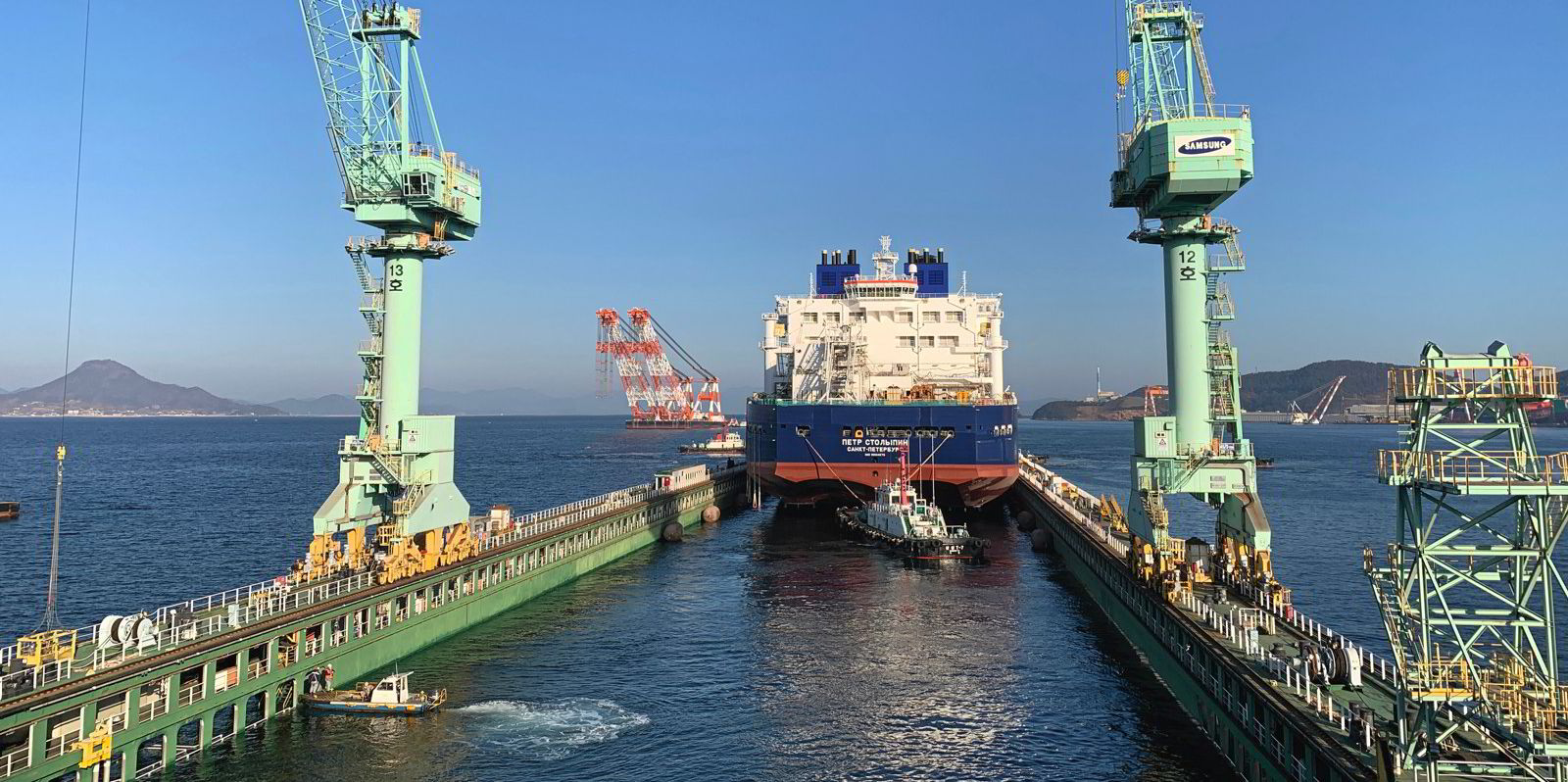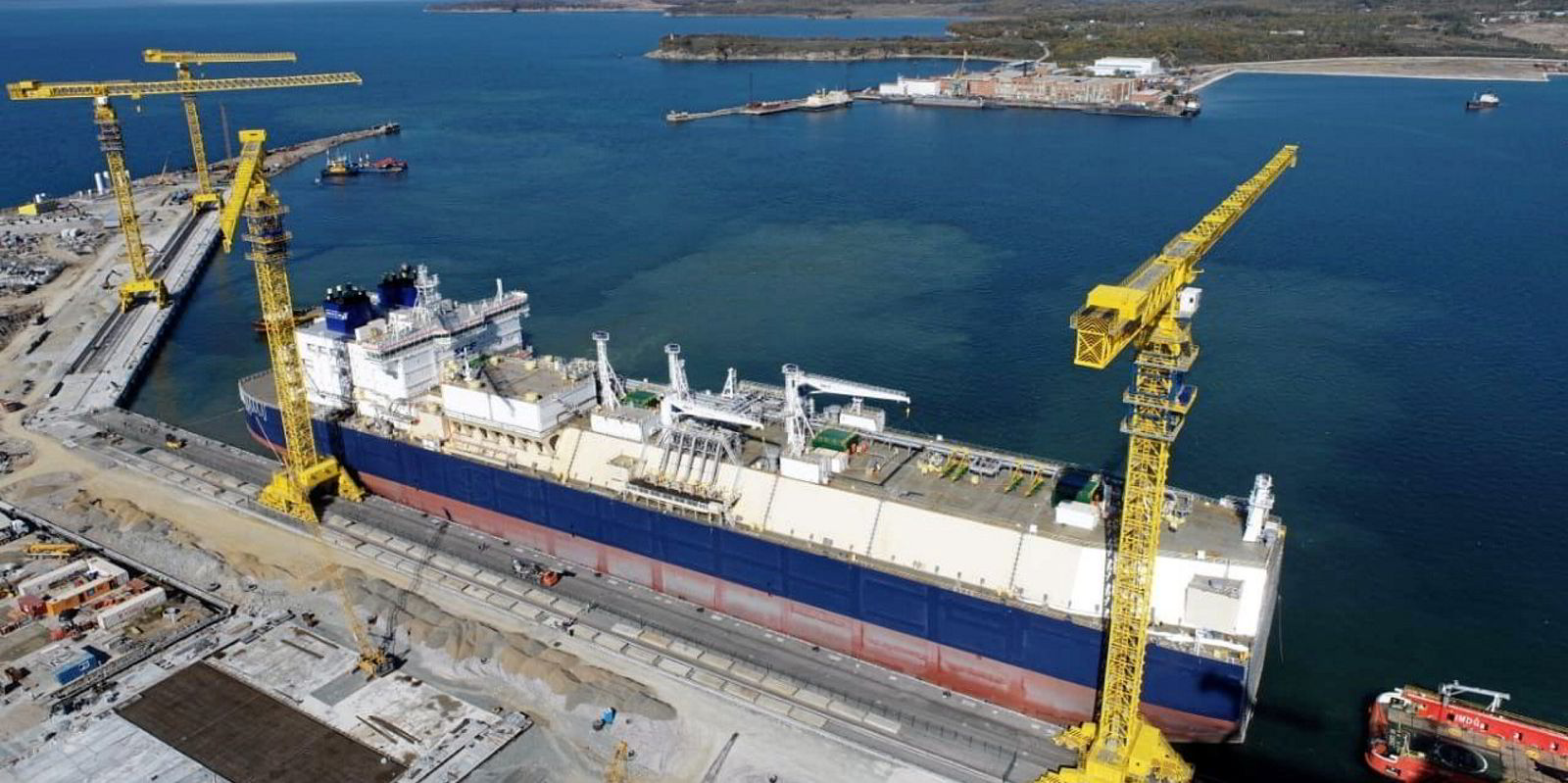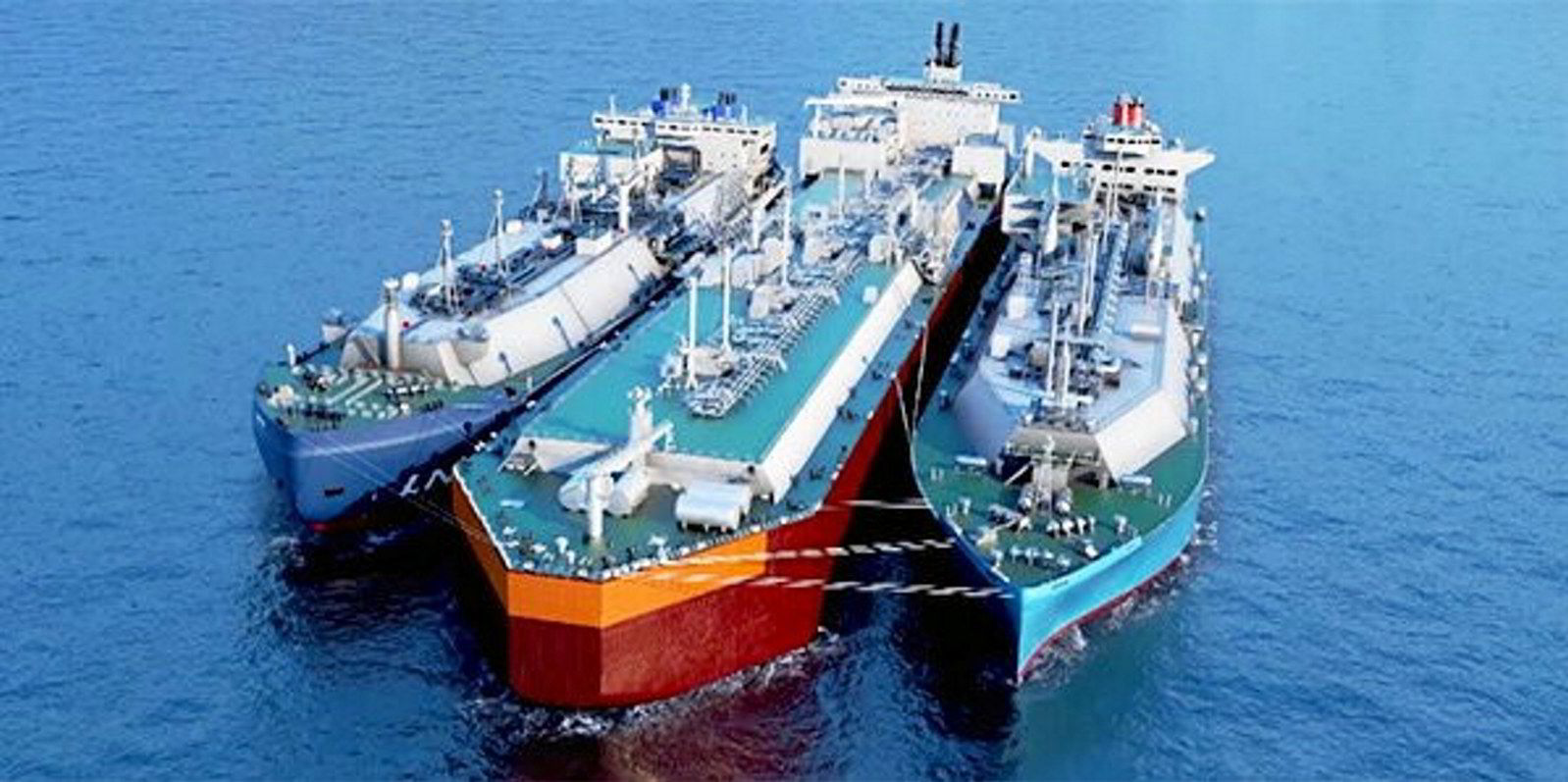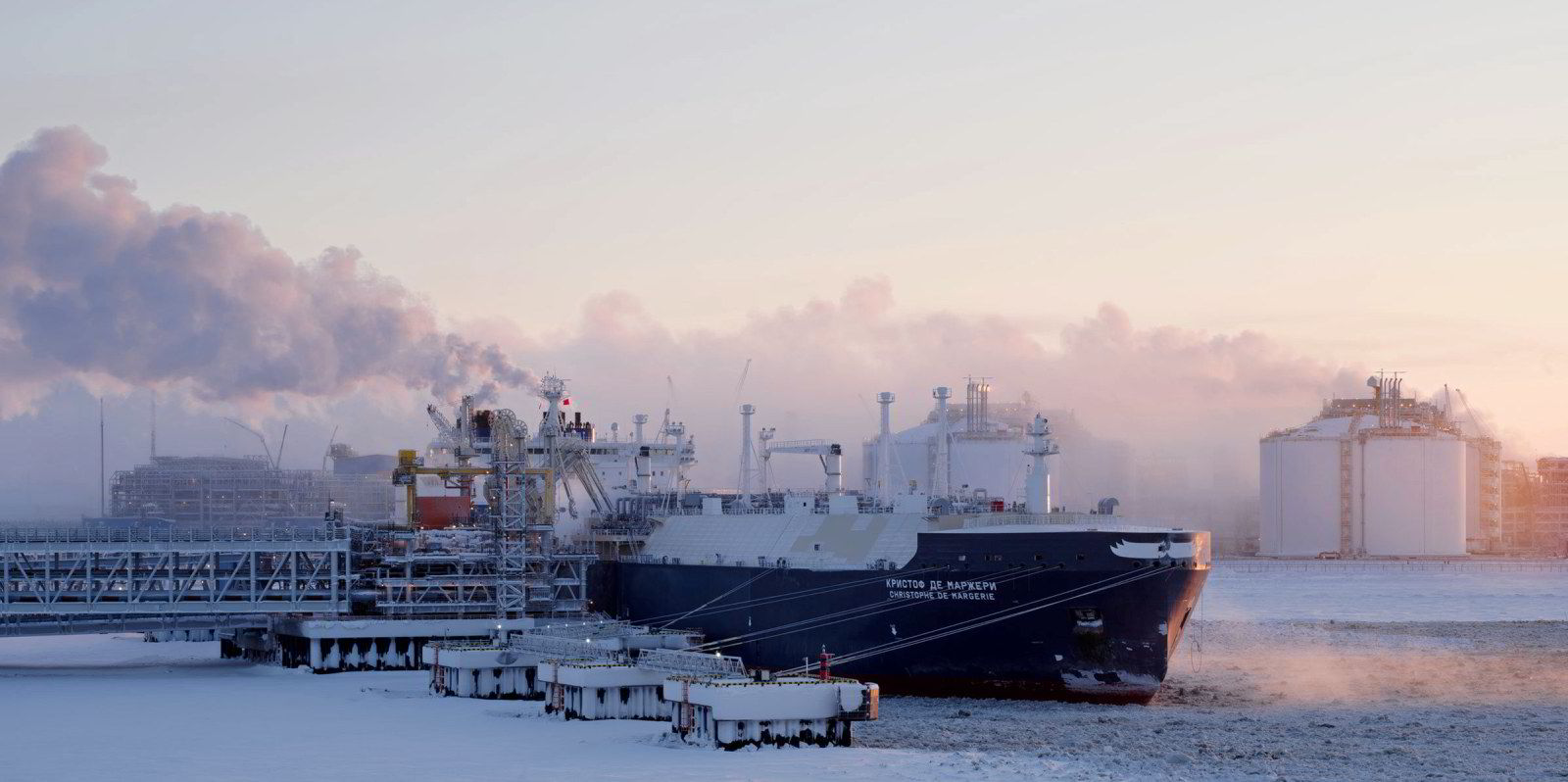A RUR 890m ($12.1m) subsidy has been granted by the Russian government towards the cost of building what will be the second in a fleet of 21 ice-breaking LNG carriers being constructed for the Novatek-led Arctic LNG 2 project.
The government said the cash is from the Development of Shipbuilding and Equipment for Exploring Sea Shelf Deposits State Program and will be paid from the reserve fund to complete the second stage of the work on the vessel.
The 172,600-cbm Arc7 LNG carrier will be the first vessel for Novatek-Sovcomflot (SCF Group) joint venture Smart LNG which is building 14 specialised vessels for the project.
The ship has already been launched at Samsung Heavy Industries in South Korea and will be towed to Russia's Zvezda Shipbuilding Complex in Bolshoi Kamen for tank fitting and completion.
It is due to be named Pyotr Stolypin, after Russia's third prime minister who was assassinated in 1911 in a theatre in Kiev.
It is due to be delivered in 2023 to dovetail with the planned start-up of the first train of the 19.8-million tonnes per annum (mtpa) liquefaction train from Arctic LNG 2.
The hull of the first pilot Arc7 vessel, the 172,600-cbm newbuilding Aleksey Kosygin, arrived at Zvezda for outfitting in October.
This ship was contracted by Sovcomflot and is due to be delivered by the end of February 2023.
This is the first Arc7 LNG carrier in a series of 15 that will be built under SHI's agreement with Zvezda that was concluded in 2020.
In November last year, SHI said it is being paid around $2.5bn to supply blocks and equipment under a contract which runs until December 2025.
Separately another six vessels are being built at Daewoo Shipbuilding & Marine Engineering.
Russia's Yamal LNG project is already served by a fleet of 15 Arc7 LNG carriers.
This next generation of 21 Arc7 vessels is designed to spend more time in ice and geared for year-round operations.
Their deliveries coincide with Russia's plans to open up the year-round navigation of the Northern Sea Route.
Novatek has indicated it expects to produce 70-mtpa of LNG by 2030 and increase this to 91 mtpa by 2035. This could require a further 20 to 30 ice-breaking LNG carriers.







